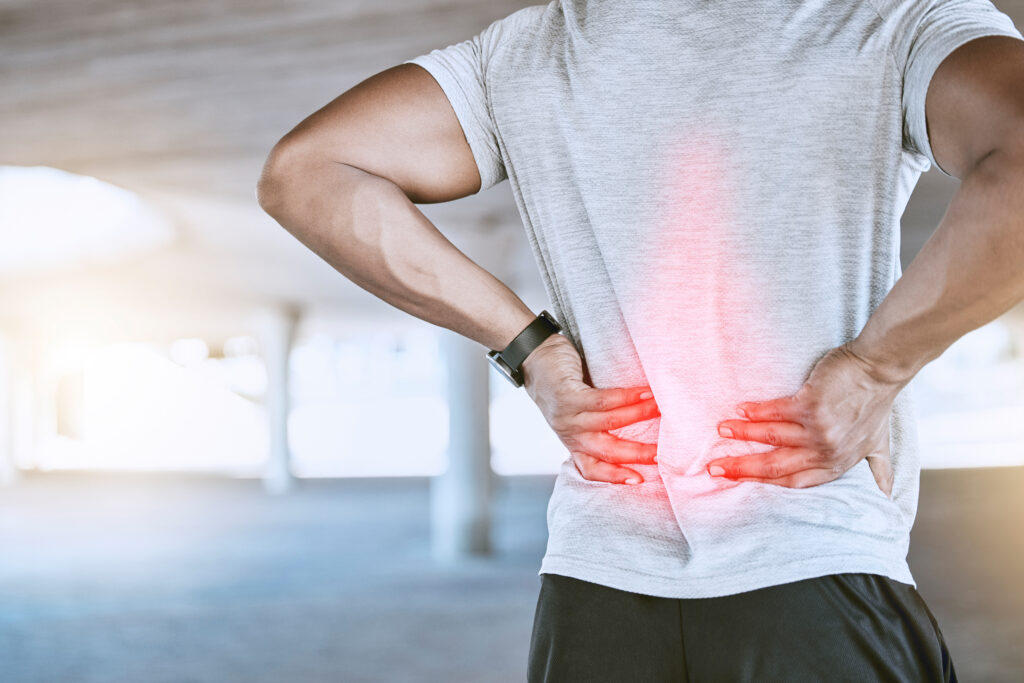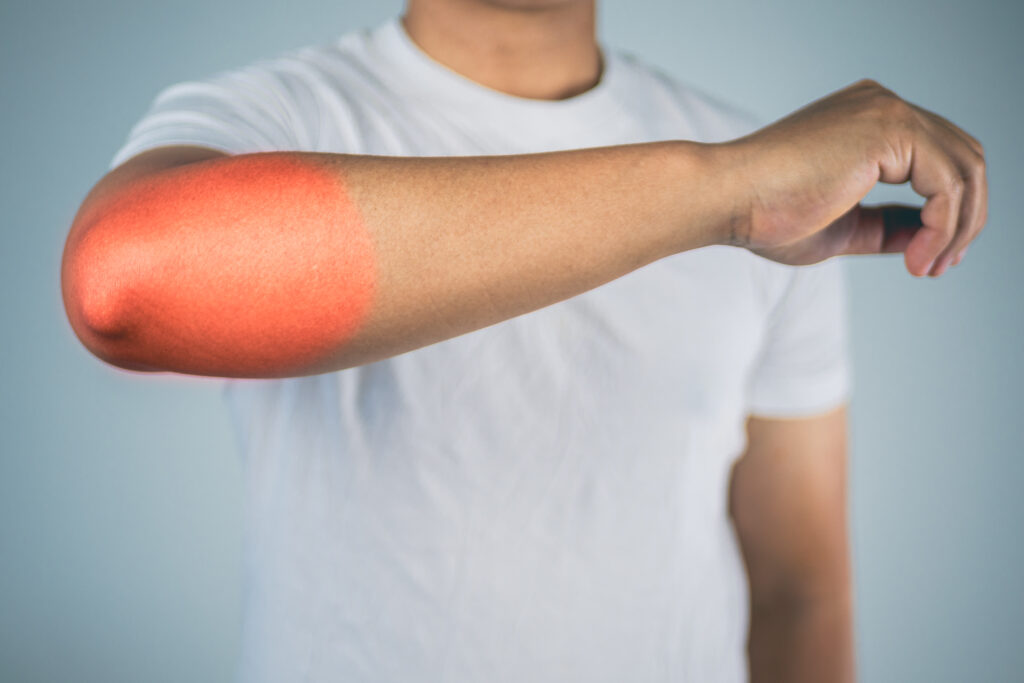When dealing with a sports injury, it's crucial to understand the effective techniques that can aid in your recovery. As a local chiropractor, I want to emphasize the importance of personalized chiropractic care, which is tailored to fit your unique needs and can significantly enhance your healing process.
In addition to traditional adjustments, we can explore innovative treatments like cryotherapy, which has been shown to reduce inflammation and promote quicker recovery times. Pain management is another essential aspect of your rehabilitation; we can discuss natural methods, such as manual therapy and targeted exercises, that help alleviate discomfort and restore function.
However, there are also some lesser-known techniques that can greatly benefit your recovery. For instance, incorporating proper nutrition and hydration can support your body's healing capabilities, while mindfulness practices can aid in reducing stress, which often accompanies injury.
Let's dive into these techniques and discover how they can transform your rehabilitation journey, helping you return to peak performance naturally and effectively.
Importance of Rest
As a local chiropractor, I want to emphasize the critical role of rest when you're recovering from a sports injury. I understand that it might feel counterintuitive—especially for those eager to get back to their favorite activities—but allowing your body the necessary time to heal is vital for a full recovery. Skipping rest can lead to prolonged healing times or, even worse, worsen the injury.
During your recovery, your body is actively working to repair itself, which includes healing muscles, ligaments, and tendons. By prioritizing rest, you create an optimal environment for this healing process. Additionally, don't underestimate the power of quality sleep. It plays a fundamental role in your recovery by helping your body release growth hormones essential for tissue repair. So, make it a point to enjoy those restorative nights!
I know the urge to push through discomfort can be strong, but it's crucial to listen to what your body is telling you. Ignoring pain signals can lead to long-term issues down the line. Instead, I encourage you to maintain a positive mindset during this healing phase. Engage in low-impact activities that won't stress your injury—like reading or practicing mindfulness—to keep your spirits elevated.
If you're looking for gentle ways to stay active without overexerting yourself, consider incorporating light stretching or movements as advised by your healthcare provider. This can help maintain flexibility while respecting your body's need for rest.
Role of Physical Therapy
When it comes to recovering from a sports injury, chiropractic care can be a vital component of your rehabilitation.
As a chiropractor, I focus on creating personalized treatment plans that address your unique needs, enabling you to regain strength and mobility effectively.
Additionally, we utilize natural healing techniques and pain management strategies that can significantly enhance your recovery experience, making it smoother and more comfortable.
It's all about helping your body heal naturally and restoring your overall function.
Personalized Rehabilitation Programs
As a local chiropractor, I want to emphasize the importance of personalized rehabilitation programs in the recovery process, especially when it comes to sports injuries. Unlike a one-size-fits-all approach, a tailored plan is essential for addressing your unique needs as an athlete. Each injury, fitness level, and personal goal must inform your rehabilitation strategy for effective healing.
Working closely with a chiropractor, we can develop a program that highlights your individual strengths and weaknesses. This customized approach not only aids in regaining strength, flexibility, and endurance, but it also enhances your overall athletic performance as you recover.
You'll participate in specific exercises designed to expedite your healing process while preparing you to excel in your sport once you return. Regular evaluations are crucial in this journey. I'll monitor your progress and make necessary adjustments to your program, ensuring you stay on track for a successful recovery.
Open communication is key; I encourage you to share any concerns or challenges you may encounter along the way. Incorporating drills that mimic your sport can further bridge the gap between recovery and returning to play.
With a personalized rehabilitation program tailored to your needs, you're not only more likely to return to your sport stronger but also to prevent future injuries and enhance your overall performance. Investing in a tailored approach is a vital step in maximizing your recovery and embracing a healthier lifestyle through natural healing.
Pain Management Techniques
As a local chiropractor, I believe that effective pain management is crucial for athletes recovering from injuries, and chiropractic care can play a significant role in this process. By working with a chiropractor, you can discover natural healing techniques to alleviate pain and promote recovery.
Here are some key benefits of incorporating chiropractic care into your recovery plan:
- Spinal Adjustments: Gentle adjustments can realign your spine, which may relieve pressure on nerves and reduce pain in affected areas.
- Soft Tissue Therapy: Techniques such as myofascial release and trigger point therapy can help relieve muscle tension and improve circulation, supporting the healing process.
- Rehabilitation Exercises: I'll guide you through specific exercises designed to strengthen injured areas while minimizing discomfort.
- Education and Posture Training: You'll learn about your body mechanics and posture, equipping you with the knowledge to prevent future injuries and maintain overall health.
Chiropractic care not only addresses pain but also empowers you with natural tools and insights for a smoother recovery. By incorporating these methods, you can enhance your strength, flexibility, and overall function more effectively.
Benefits of Nutrition
As a local chiropractor, I want to emphasize the critical role that nutrition plays in your recovery from sports injuries. Your body's ability to heal and regain strength is closely linked to the nutrients you consume. When you're recovering from an injury, it's vital to provide your body with specific nutrients that aid in repairing damaged tissues and reducing inflammation. A balanced diet rich in proteins, vitamins, and minerals can significantly enhance your healing process.
Protein is a key player in recovery, as it aids in rebuilding muscle and connective tissues. Incorporating sources such as lean meats, fish, eggs, or plant-based options like beans and lentils into your meals will supply the necessary amino acids that your body needs for healing.
Don't overlook the importance of healthy fats either; they help reduce inflammation and support overall wellness. Consider adding foods like avocados, nuts, and olive oil to your diet.
Furthermore, vitamins and minerals are essential for your recovery. For instance, vitamin C is crucial for collagen formation, which is vital for tissue repair, while calcium and vitamin D work together to maintain bone health, especially if you're dealing with a fracture or stress injury.
Hydration is another key factor in your healing journey. Water is essential for every bodily function, including recovery. Staying hydrated can prevent dehydration, which can slow down your healing process, so be sure to drink plenty of fluids throughout the day.
As your chiropractor, I encourage you to pay attention to your nutrition as part of a holistic approach to healing. By supporting your body with the right nutrients, you'll enhance your recovery and overall well-being.
Innovative Recovery Modalities
As a local chiropractor, I want to share with you some innovative recovery modalities that can significantly enhance your healing process after sports injuries.
These advanced techniques are designed to work alongside traditional rehabilitation methods, helping you recover more efficiently and effectively. By exploring these options, you can find the right fit for your individual needs and preferences, allowing you to customize your recovery journey.
Here are some innovative recovery modalities that I recommend:
- Cryotherapy: This technique involves exposing your body to very cold temperatures for a brief time, which can help reduce inflammation and accelerate your healing process. Many athletes have found cryotherapy to be invaluable in their recovery routines.
- Hydrotherapy: By utilizing the natural buoyancy of water, hydrotherapy can take the strain off your joints, making it easier to improve your mobility and circulation. It's a gentle yet effective way to enhance your rehabilitation.
- Electrical Stimulation: This method employs electrical impulses to stimulate your muscles, which can help alleviate pain and promote quicker recovery. It's a safe, non-invasive technique that can be very effective.
- Laser Therapy: Low-level laser therapy is another exciting option. This treatment promotes tissue repair and reduces pain by stimulating cellular processes, making it a powerful tool in your recovery arsenal.
Incorporating these innovative modalities into your recovery plan can help you bounce back stronger and faster.
If you have any questions or would like to learn more about how these methods can complement your chiropractic care, please don't hesitate to reach out!
Utilizing Compression Therapy
As a local chiropractor, I want to introduce you to the benefits of incorporating compression therapy into your healing journey. This innovative recovery technique involves applying controlled pressure to specific areas of the body, which can significantly help in reducing swelling and enhancing circulation.
By improving blood flow, compression therapy ensures that vital nutrients and oxygen reach your injured tissues more effectively, leading to a faster recovery.
There are various forms of compression therapy you can consider. For everyday use, compression garments or wraps can be incredibly convenient. For example, compression sleeves for your arms or legs can provide continuous support throughout your day.
If you're looking for a more intense therapy, pneumatic compression devices, which inflate and deflate at set intervals, can be particularly beneficial after a tough workout or an injury.
It's important to understand that incorporating compression therapy into your routine goes beyond just recovery; it can also play a crucial role in preventing future injuries. By stabilizing the injured area, you reduce the risk of re-injury during your rehabilitation process.
Many athletes have also found that compression therapy helps to alleviate muscle soreness post-exercise, enabling them to get back to their training regimens faster.
To maximize the benefits of compression therapy, pay attention to what your body is telling you. Adjust the compression level to ensure your comfort, and don't hesitate to consult with a healthcare professional, like myself, to find the best approach tailored to your specific injury.
With regular use, you should notice significant improvements in your recovery time and overall performance. Remember, natural healing is a journey, and I'm here to support you every step of the way.
Effective Stretching Techniques
As your local chiropractor, I want to emphasize how effective stretching techniques can significantly aid in your recovery from sports injuries. Many of my patients are unfamiliar with how these methods can enhance their healing process, so let's break it down.
Firstly, dynamic stretching is incredibly beneficial. It involves moving parts of your body through a range of motion in a controlled manner, which can help increase blood flow and prepare your muscles for activity. This is particularly important for injury recovery, as it promotes flexibility and mobility.
Next, static stretching is another key method to incorporate into your routine. This involves holding stretches for a period of time to lengthen the muscles and improve overall flexibility. It's a great way to relieve tension and can be particularly helpful after physical activity.
Additionally, I recommend considering foam rollers as part of your recovery toolbox. These tools can assist in self-myofascial release, helping to alleviate muscle tightness and improve circulation. Using a foam roller can complement your stretching routine and enhance your healing process.
By understanding and implementing these effective stretching techniques, you can support your body's natural healing capabilities and work towards a more complete recovery.
If you have any questions about how to incorporate these methods or would like personalized guidance, I'm here to help!
Dynamic Stretching Benefits
As a local chiropractor, I want to share with you the importance of dynamic stretching and how it can benefit your overall well-being, especially if you're engaging in physical activities.
Dynamic stretching is a proactive way to enhance flexibility and performance, and it can be particularly beneficial before any physical exertion. Unlike static stretches that hold a position, dynamic stretches involve movement and are designed to warm up the body. This movement increases blood flow to your muscles, preparing your body for the demands of your sport or workout.
When incorporated into your warm-up routine, dynamic stretching can provide several advantages, including:
- Increased range of motion
- Improved athletic performance
- Enhanced muscle coordination
- Reduced risk of injury
Engaging in dynamic stretching goes beyond merely warming up; it's about activating your muscles and nervous system, making them more responsive. This preparation is crucial for explosive movements, whether you're running, jumping, or participating in any physical activity.
Some effective dynamic stretches you can try include leg swings, walking lunges, and arm circles. These movements closely mimic the actions you'll perform during your activities, allowing your body to adapt and function optimally.
By making dynamic stretching a regular part of your pre-game or workout routine, you may notice significant improvements in your performance and overall readiness.
As you explore the benefits of dynamic stretching, remember that it's an essential component of your physical health. Embracing these practices can help set you up for success in your athletic pursuits and contribute to your overall wellness.
If you have questions about incorporating dynamic stretching into your routine or want to learn more about natural healing through chiropractic care, feel free to reach out!
Static Stretching Techniques
As a chiropractor, I often emphasize the importance of incorporating static stretching into your wellness routine to enhance flexibility and promote overall muscle health. This technique involves holding a stretch for a duration of 15 to 60 seconds, which allows your muscles to relax and elongate.
By concentrating on specific muscle groups, you can effectively alleviate tension and improve your range of motion—an essential aspect of recovering from injuries.
To begin, identify the muscle groups you wish to focus on. Common areas that benefit from stretching include the hamstrings, quadriceps, and shoulders. I recommend starting with a few deep breaths to ground yourself, then gently ease into each stretch.
It's important to never force a stretch; instead, aim for a mild pull that feels comfortable and pain-free. Proper alignment during stretching is crucial to prevent unnecessary strain on your body.
After holding each stretch, take a moment to breathe deeply, allowing your muscles to relax before transitioning to the next one. For optimal results, try to incorporate static stretching into your routine at least 2-3 times a week.
Over time, you'll likely experience increased flexibility, reduced muscle soreness, and an enhanced overall sense of well-being as you recover from any injuries. Remember, stretching is a natural way to support your body's healing process!
Incorporating Foam Rollers
As a local chiropractor, I want to introduce you to a valuable tool that can greatly enhance your recovery and overall well-being: foam rollers. Many people are unfamiliar with how effective foam rolling can be in alleviating muscle tightness and promoting natural healing.
By incorporating foam rolling into your routine, you can actively support your body's ability to recover, increase flexibility, and improve circulation, all of which are essential for maintaining a healthy lifestyle.
Here's how you can make the most of foam rolling:
- Focus on specific areas: Pay attention to muscle groups that often feel tight or sore, such as your quads, hamstrings, and calves. This targeted approach can help release tension and improve mobility.
- Practice proper technique: When using a foam roller, roll slowly over the muscle, taking the time to pause on any knots or tender spots for 20-30 seconds. This technique encourages the muscles to relax and can enhance your recovery process.
- Integrate it into your warm-up: Using a foam roller before workouts can prepare your muscles and improve your range of motion, setting the stage for a more effective exercise session.
- Include foam rolling in your cool-down routine: After exercising, taking just a few minutes to roll out your muscles can help flush out lactic acid and accelerate recovery, making you feel better faster.
By understanding and utilizing foam rollers, you can take an active role in your health and recovery, complementing the chiropractic care you receive here.
Let's work together to enhance your body's natural healing abilities!
Mental Health and Recovery
Understanding the emotional journey of injury recovery is just as important as focusing on the physical aspects of healing. As a chiropractor, I often see patients who may feel sidelined by their injuries, leading to emotions like frustration, anxiety, and even depression. These feelings are completely normal, but they can impact your motivation and overall well-being. Acknowledging these emotions is the first step toward a holistic recovery.
It's essential to cultivate a positive mindset during this time. This may involve setting realistic rehabilitation goals, celebrating small milestones, and concentrating on elements within your control. Visualization techniques can be particularly powerful; imagine yourself back to your full activity level, feeling strong and capable. This kind of mental imagery not only boosts confidence but also helps maintain motivation during challenging times.
Don't underestimate the importance of social support in your recovery process. Engaging with friends, family, or teammates who understand your situation can provide comfort and remind you that you're not alone. Additionally, consider reaching out to a mental health professional who specializes in injury recovery; they can equip you with effective strategies for coping with emotional challenges.
Incorporating practices like mindfulness, meditation, or yoga into your routine can significantly enhance your recovery experience. These techniques help reduce anxiety and improve focus, making it easier to navigate the emotional ups and downs that often accompany healing.
Ultimately, your mental health is a crucial factor in how quickly and effectively you recover. By addressing both your physical injuries and emotional hurdles, you're setting the stage for a stronger comeback.
As your chiropractor, I encourage you to prioritize your mental well-being alongside your physical recovery; this combined approach will help you move toward a clearer path of healing and wellness.
Conclusion
As a local chiropractor, I want to emphasize the importance of prioritizing rest and incorporating personalized physical therapy in your recovery from sports injuries. It's essential not to overlook how crucial nutrition is in the healing process, as it fuels your body's recovery. Additionally, innovative recovery methods such as cryotherapy and compression therapy can significantly enhance your rehabilitation efforts.
Effective stretching techniques are also vital in restoring flexibility and strength. Remember, your mental health plays a crucial role in recovery too; setting realistic goals can help you maintain a positive mindset throughout your healing journey. By integrating these techniques, including the holistic approaches of chiropractic care, you'll be well on your way to a successful recovery. If you have any questions or would like to explore how chiropractic care can aid in your recovery, feel free to reach out!



